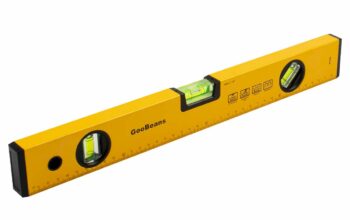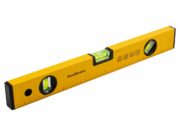Quantum computing represents a paradigm shift in computational capabilities, and the tantalizing notion of constructing a one-qubit quantum computer at home beckons the curious minds. The challenge itself poses an intriguing question: How can one embark on this ambitious journey while navigating the complexities of quantum mechanics? This endeavor requires not only a thorough understanding of qubit operations but also the innovative application of various materials and components. This article will serve as a comprehensive guide to help you conceptualize and, ultimately, realize your own one-qubit quantum computer.
Before delving into the practical aspects, let us dissect the notion of a qubit. A quantum bit, or qubit, is the fundamental unit of quantum information. Unlike classical bits that embody a definitive state of 0 or 1, qubits can exist in superpositions of both states simultaneously. This unique property arises from quantum phenomena such as entanglement and interference, which engender an exponential increase in computational power for specific problems. To grasp the potential of a qubit, it is essential to familiarize oneself with its operational principles and the importance of quantum gates.
In the endeavor to create a one-qubit quantum computer, the following foundational components must be meticulously considered:
1. Understanding Quantum Superposition
The first step involves a conceptual leap into the realm of superposition. At its core, superposition allows a qubit to represent multiple states at once. To construct a operational qubit, one must explore materials that exhibit quantum behavior, such as superconductors or trapped ions. However, for the sake of a home-built prototype, consider using a basic system that can be manipulated to demonstrate quantum behavior, such as a photon or a single electron spin.
2. Selecting the Right System
A practical choice for a basic qubit implementation could involve utilizing a superconducting qubit or an optically trapped atom. However, for a DIY project, consider adopting an optical approach using polarized photons. The manipulation of light allows an easier entry into quantum behavior without requiring complex refrigeration systems to maintain superconductivity.
3. Hardware Essentials
The implementation of a one-qubit quantum computer necessitates specific hardware elements. At a minimum, you will require:
- Light Source: A laser capable of producing coherent light is paramount. This laser will serve to create the superposition states necessary for qubit operations.
- Beam Splitter: This optical device can split a beam of light into two paths, enabling the creation of a superposition state.
- Polarizers: Essential for measuring the state of the qubit, polarizers help discern between the horizontal and vertical polarization states, effectively acting as the measurement apparatus for the qubit.
- Detectors: Single-photon detectors are integral for confirming the output states of your qubit system.
4. Building the Quantum Circuit
Once the necessary components are assembled, the next stage involves constructing the quantum circuit. This step is crucial, as the layout will dictate the functionality of your qubit. Connect the laser to the beam splitter, and ensure that the resultant paths can be manipulated separately. For instance, manipulating the phase or amplitude of the light along each path will allow for the creation of distinct states. Employ the polarizers at the end of the respective paths to measure the polarization state, thus effectively collapsing the superposition into a definitive state that can be interpreted as 0 or 1.
5. Quantum Gate Implementation
With your circuit in place, the next challenge is to implement quantum gates. Quantum gates are the building blocks for executing quantum algorithms. A one-qubit gate, such as the Hadamard gate, can be realized by appropriately manipulating the phase and amplitude of the incoming light. For instance, employing phase shifters can rotate the polarization of the light, facilitating the transition between the basis states. Crafting a reliable method to apply these gates experimentally is a task that demands precision and keen attention to detail.
6. Measurement and Results
Upon successful application of quantum gates, one can proceed to execute the measurement. This step invariably leads to a playful inquiry: What states do you observe? Measurement collapses the qubit’s superposition into a classical state, revealing either 0 or 1. By repeating the process multiple times and employing statistical analysis, one can gather data on the behavior of your qubit. Running multiple trials will yield a distribution that can further validate your qubit’s capabilities and error rates.
7. Overcoming Challenges
It is crucial to anticipate challenges such as decoherence, which can arise from environmental interactions. Ensuring that your setup is shielded from extraneous noise and temperature fluctuations will significantly enhance the fidelity of the qubit operations. Moreover, understanding the nuances of quantum error correction can bolster your system’s resilience against potential discrepancies in measurements.
In conclusion, fashioning a one-qubit quantum computer is a multifaceted undertaking that intertwines the realms of theoretical physics and practical engineering. While the journey may appear daunting, it offers a magnificent tableau for exploration. Delve into the intricacies of qubits, embrace the operational challenges, and watch as your creation materializes into a testament of quantum ingenuity. As you traverse through the esoteric territory of quantum mechanics, ponder not only the technical aspects but also the philosophical implications of this revolutionary technology. Will your efforts lead to insights that transcend conventional computational limits? Only time and exploration will tell.












